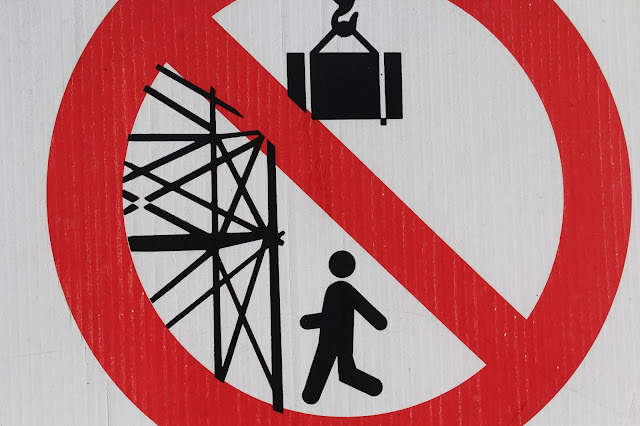What are the safety requirements for the use of scaffolding ?
 |
Provincial and federal occupational safety lows outline specific duties and responsibilities for employers, supervisors and workers. Knowing the rules and regulations is in everyone's interest.
- Ensure everyone is properly trained. Safety regulations required at workers be trained in the design and operation of scaffolding. Training covers important safe work practices such as how to safely get on the off the scaffold (using an access ladder, not the scaffold frame unless it is specially design to be climb and both hands free to grab the rungs). It should also comprehensive fall protection training specific put the type of scaffolding, erecting and dismantling procedures for anyone involved in this activities, and a host of other life saving details.
- Take the time for preparation work. Before using scaffolding, make sure the bases sound, level and adjusted; that the legs are plumb and all braces in place; that locking device and ties are secured; that close members are level; and that plank, decks and guardrail are installed and secure. Check the location for ground conditions such as slopes, and stay clear away from harzards such as overhead wire's, obstruction and changes in surface elevation.
 |
- Keep it legal. CSA standard communities have identify "rogue employers" as a significant obstacles to scaffold safety. These are employers who fly under the radar and operate without a license," says Jeet Tulshi, a CSA project manager. They get some pick up truck, rent a until and hope they don't get caught. They might import material from offshore and put it together without having it surveyed or reviewed by professional engineers. That was the case of christmas eve 2009, he says.
- Know and respect to load capacity. According to Ontario Ministry of Labour, failure to consider all the loads to which the scaffold maybe subject in one of the top things that go wrong at the design stage. The scaffold must be strong enough and capable of holding the desire weight, otherwise it could collapse. Don't try to fit more workers on the platform then it can handle; don't overload it with equipment and materials and don't rest anything on the guardrail.
- Ensure the scaffold is properly secure. The scaffold must be adequately braced or tied to the building. If it is wrapped in a trap for protection from the elements, it could blow oh if it isn't secured. According to the "Construction Safety Association of Manitoba," bracing must be properly secured in place otherwise scaffold moment may dislodged and end, reduce the stability of the scaffold. There are several different braces retention are looking system found on scaffold these devices most operate freely for easy of assembly and dismantle and also looks securely to prevent a brace from dislodging. Nails and other miscellaneous odds and ends should not be used in place of corporate ancient parts supplies by the manufacturer.
- Inspect and maintain. Scaffolding must be routinely inspected by the supervisor and by a competent person. Ideally a professional engineer for a person designated in writing by a professional engineer. In case of the suspended platform, inspect and test all component including welds, stirrup, connecting pins, connecting plates, trusses, beams and working surfers. Check that the lumber is of good quality. If any pieces get broken or damage, replace them right away. Inspect frames, braces and other components for damage, bend and excessive rust or wear. Also check motors, platform or wipe ropes for damage from chemical or corrosive material.
- Good housekeeping. There isn't much room on scaffold, so its important to store tools and materials in an orderly fashion. Keep the platform free from obstruction. Place debris and waste material in a container or remove it from the platform immediately.
- Keep your balance. Scaffold and its platform most be perfectly level (CSA standard says it mustn't deviate from the vertical by more than 12 millimeter per 3 meters of height) to minimize the risk of worker losing balance and falling off. Particularly on swing a stage, there must be an adequately weighted counterweight. Pay attention when working on a scaffold. Any sudden moments, or reaching too far from the platform can cause a loss of balance.
- Use appropriately PPE (Person Protective Equipment). This includes head protection non-slip protective footwear and fall protection as required. In the form of a safety harness tied off to solid structure, such as the building. Ontario's construction safety regulations indicate that harness can be tied off tu the suspended platform all scaffold only, "if all of part of the platform or scaffold has more than one independent means of support and platform or scaffold is to design, constructed and maintain that the failure of one means of support will not causes the collapse of all or part of the platform or scaffold."


Comments
Post a Comment